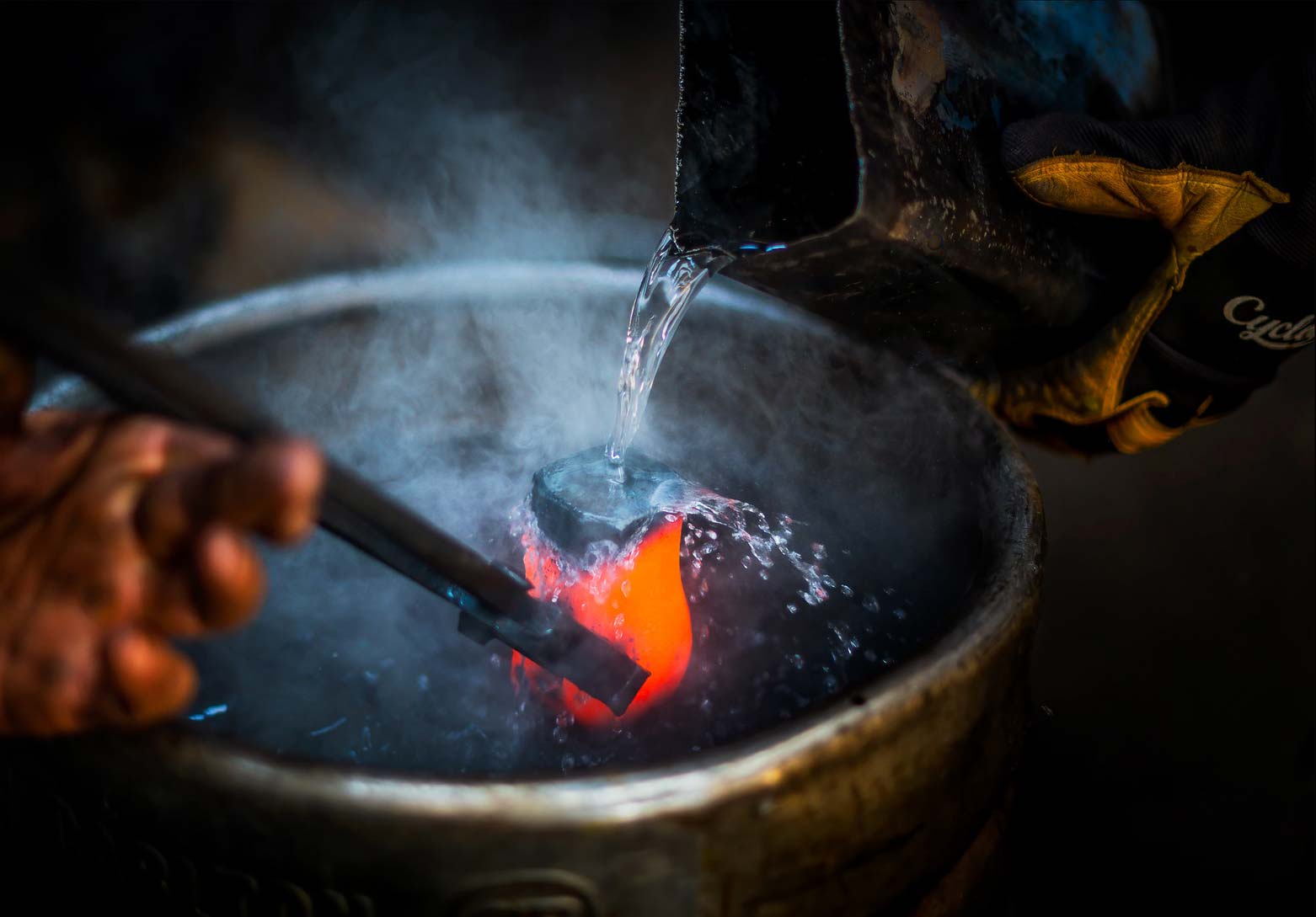
Hardening of metals is a mandatory process of heat treatment of steel alloys, necessary to increase their hardness and strength. Without hardening, steel would be too soft and unable to withstand high loads, which makes this stage critically important for the creation of durable metal structures. In this article, we will consider how exactly the hardening process occurs and what types of it exist.
Metals and their properties
What is steel? It is an alloy of iron and carbon, where the carbon content is precisely defined and amounts to 2.11%. There are many types of steel, such as:
- carbon steel;
- alloy steel;
- structural steel;
- tool steel;
- special steel and others.
In addition to iron and carbon, steel may also contain other elements that give it specific properties. For example:
- Aluminum improves ductility and corrosion resistance,
- Chromium increases hardness and wear resistance,
- Nickel improves impact resistance and toughness,
- Copper increases corrosion resistance,
- Manganese improves strength and wear resistance,
- Silicon increases hardness and oxidation resistance,
- Tungsten increases heat resistance and hardness at high temperatures.
Hardening technologies
What is steel hardening? This is a heat treatment process that makes steel significantly harder and stronger, while maintaining its elasticity and resistance to abrasion and wear. Hardening steel involves heating the material to a certain temperature, after which it is quickly cooled. This process is called quenching, and to reduce internal stress and improve properties, the steel is then tempered.
The hardening temperature depends on the type of steel and its intended use. To obtain optimal properties, it is important to strictly adhere to the temperature parameters, which can be found in steel hardening tables. Failure to comply with these parameters can lead to excessive brittleness of the material, which will negatively affect its performance characteristics.
Types of hardening and tempering of steel
Hardening of steel can be carried out using various methods, depending on the desired properties of the finished product.
- Conventional hardening (martensitic hardening): The main process here is austenitization, in which the steel is heated to a temperature at which it acquires the austenite structure. The steel is then quickly cooled with water or oil. This method is used to produce extremely hard, strong and rigid steel products.
- Step hardening (Ausbay): This method is used for high-strength alloy steels. The steel is rapidly cooled in molten nitrate, which reduces internal stresses and prevents deformation. Step hardening is especially effective for processing parts with complex geometries.
- Isothermal hardening: Recommended for parts that need to retain good ductility after heat treatment. The process involves heating the steel and then holding it in molten nitrate or lead at a constant temperature.
- Surface hardening: In this method, only the surface of the steel element is hardened. This method of hardening improves the mechanical properties of the material, reduces the risk of cracks on the surface and strengthens only those elements that require hardening, and not the entire material.
Application of different steel hardening methods
The choice of hardening method depends on the specific requirements for the final product. Martensitic hardening is suitable for components that require high hardness and strength, such as tools and cutting parts. This method is widely used in the production of blades, gears and other components where high wear resistance is important.
Step hardening, due to the reduction of internal stresses and minimization of deformation, is ideal for complex parts, such as cranks, shafts and other mechanical components that must retain their precise shape and dimensions even after hardening.
Isothermal hardening is most often used for components that require a combination of high strength and good ductility. This method is used in the production of springs, bushings and other components operating under dynamic loads.
Surface hardening is used when it is necessary to harden only the outer layer of the product, leaving the core softer and more ductile. This method is used in the production of parts subject to heavy wear, such as gears, cams and shafts.
Conclusion
Hardening of steel is an integral part of the heat treatment process necessary to achieve the desired material properties. Understanding the various hardening methods and choosing the right processing technology allows you to create products that meet the most stringent requirements for strength, hardness and durability. Regardless of the method chosen, it is important to accurately follow the process parameters to ensure high quality of the finished product.